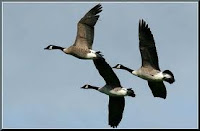
Upon reading articles and websites about the Livestock Guardian Dog, I was impressed by how lonely and courageous these dogs are, yet they have been guarding flocks for centuries.The puppies are taken from their environment at four weeks of age and placed with a flock of sheep so that they can be imprinted upon them. There they are left. The Shepherd, or Handler brings them food and water, and arranges a place of safety in case they are bothered by the flock. Their success as a Guardian Dog is based on this imprinting, and upon their innate instincts of: Attentiveness—to watch for threats from predators, Trustworthiness—to remain with the flock, and Protectiveness—to drive off predators by barking. The training period (4-14 weeks), can last up to two years, and with certain breeds up to four. If the flock is large, then two, three, or four dogs are used, but each have a different function. One is embedded, the others walk the perimeter.The origin of the practice of using Guardian Dogs goes back in time many thousands of years. Illustrations of these dogs show up on Babylonian and Assyrian (Nineveh) artifacts. For centuries Bedouins all across Europe and Asia worked these dogs with their flocks as they travelled. These shepherds developed their breeds according to their needs. Mountain dogs required heavy, double coats for winter guarding. With threatening predators, such as coyotes, wolves, mountain lions, feral dogs, bears, lynx, and such, the dogs needed to be large and strong to protect the sheep, or to frighten away predators. Lighter dogs, and less coated, were developed for desert areas.Each country has its own unique breed, for example, white dogs for white sheep, and colored or dark dogs for dark sheep or cattle. Only a few of the breeds are known to us in North America, and even less acknowledged.Turkey: The Anatolian Shepherd (brown). It was used also in Africa against Cheetahs. The Akbash (white). The Kangal (black mask with gray).France: The Great Pyrenees (white), also called Pyrenean Mountain Dog. Used by the Basque people.Hungary: The Komondor (white, with a corded coat). The Kuvasz (white), used by Kings and nobles.Tibet: The Tibetan Mastiff (various darker colors). Originator of English, Bull, Neopolitan, and Dogue de Bordeaux Mastiffs.Italy: The Maremma-Abruzzese (white), 2000years old. Used in many areas of the World, such as Australia and New Zealand.Poland: The Tatra (white), Also named Tatra Mountain Sheepdog, Polish Shepherd Dog. From the Carpathian Mountains.Czechoslovakia: The Slovak Cuvac (white). Found only in this country.Romania: The Carpathian Shepherd Dog (white). The Mioritic (white)Russia: (Azerbaijan). The Caucasian Ovcharka (range of colors), Tibet 2000 years old. The South Russian Sheepdog (white).Spain: The Spanish Mastiff (various colors, shown in photo above). The largest Guardian Dog. A large male can weigh over 200 pounds. The Pyrenees Mountain Dog (various colors).Portugal: The Estrela Mountain Dog (black) called The Portuguese Shepherd Dog. The Castro Loboriero (usually black) . Medium Sized dog. Used in small villages for 1000 years.Other countries, such as Yugoslavia (old) Sarplaninac (brown); Kerst Shepherd (gray/black, and Torijak (white and black). Bulgaria has the Karakatchan (mixed colors), Greece, the Hellenic Sheepdog (various colors), a little smaller. Armenia has the Armenian Gasmpr (brown), and Afghanistan, the Sage Korchil (brown), plus others.The Livestock Guardian Dog is not a pet—too big for a family with small children; their size could harm a child. The breeds are too reserved and territorial, although in Europe they have always been loyal to family members when guarding farms and properties. They average in height to the shoulder, 29-30 inches, females somewhat smaller. Their average weight is 125 pounds, females less, but for the Spanish Mastiff, as noted.Some of the breeds are used in North America by farmers and ranchers. Some have used donkeys, or llamas for guarding flocks or cattle, but science proves the dogs most effective.Courageous, brave, the Livestock Guardian Dogs have survived wars across the years, but the breeds have bred true. As a former breeder of pet dogs, I cannot but feel torn for the puppies of the world who must undergo such rigorous training. Take a look at them. They are big, cuddly dogs, but they cannot be cuddled, cannot be pets. All of this is sacrificed for their work. They can if they land in North America, but the majority of these dogs are in Europe still, in mountainous areas, basically alone, guarding sheep.Copyright Audrey MoorhouseYou can find a great deal of information about Livestock Guardian Dogs on the web, such as breeds, training, and statistics on European and North American studies.http://www.lgd.org The LGD site. Much information here.http://www.canismajor.com/dog/livestck.html Breed Informationhttp://www.canids.org/occasionalpapers/livestockguardiandogs.pdf The LGD current Use Worldwide (2001 paper by Robin Rigg)












